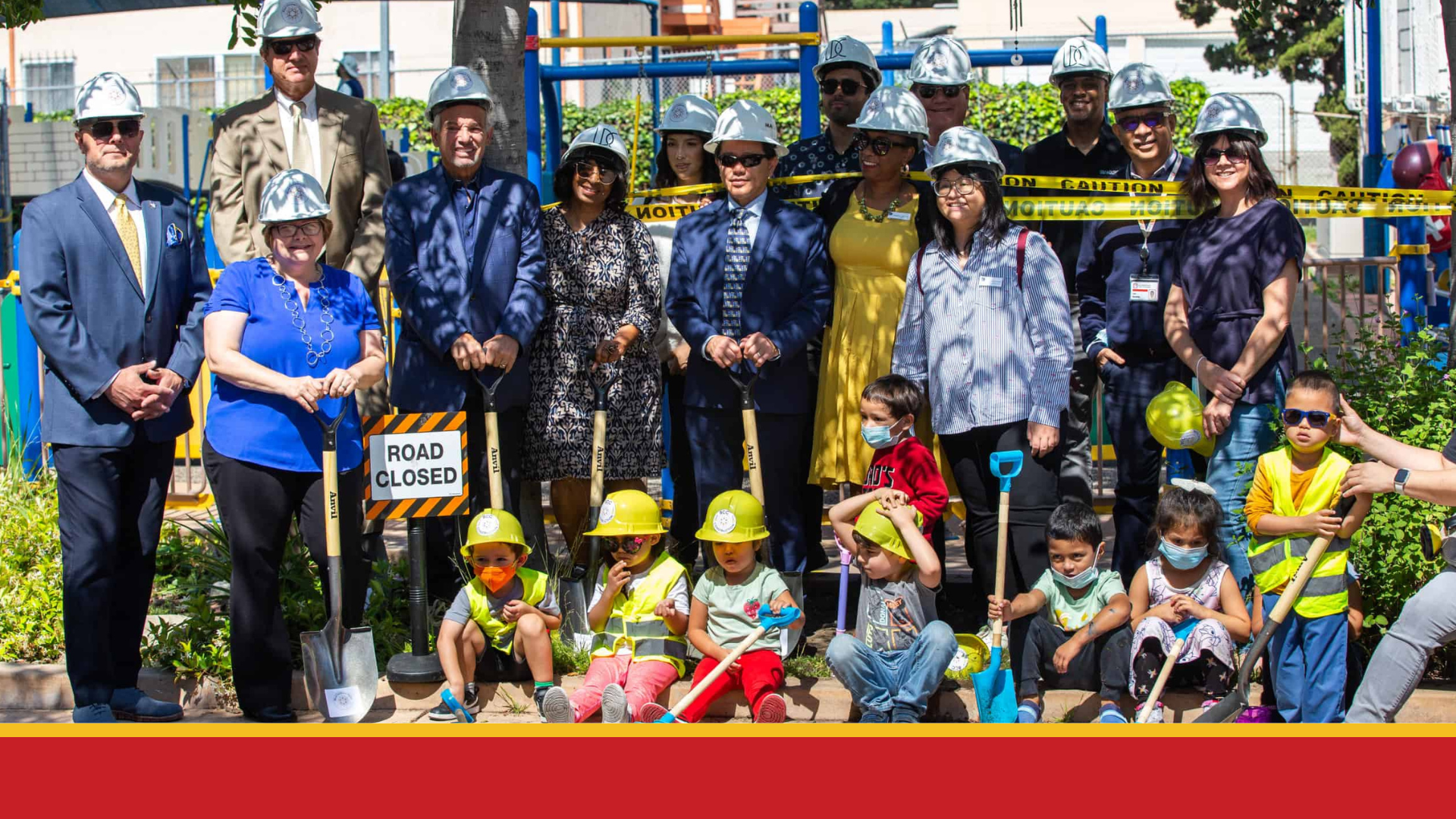 The Blind Children’s Center, a Los Angeles-based nonprofit organization founded in 1938, is currently undergoing renovations to its historic Hollywood building designed by renowned architect Paul R. Williams. Designed and constructed in the 1940s, the Center today continues to specialize in services for very young children who are blind or visually impaired and children with other disabilities.
The Blind Children’s Center, a Los Angeles-based nonprofit organization founded in 1938, is currently undergoing renovations to its historic Hollywood building designed by renowned architect Paul R. Williams. Designed and constructed in the 1940s, the Center today continues to specialize in services for very young children who are blind or visually impaired and children with other disabilities.
Since its founding, the Center is always on the lookout for opportunities to improve and expand its programs, leading to its recent renovation project that broke ground in June 2023. This project aims to accommodate the community’s growing needs, uphold the Center’s mission and preserve the unique history of the building.
“Blind Children’s Center is blessed to own its permanent facility in the heart of Los Angeles,” said Sarah Orth, chief executive officer. “Now we have a once-in-a-generation opportunity to leverage federal and state funding and private grants and donations, to modernize the Center and expand our inclusive early learning programs.”
From its humble beginnings in a volunteer-staffed home classroom to its current location in the heart of Hollywood, the Center strives to be a leader in inclusive education. The organization develops unique opportunities for children through an inclusive, family-focused setting, rooted in comprehensive programming and educational curriculum adapted to the needs of each student.
As a licensed preschool for children ages two to five years old, the Center faces challenges in operating to its maximum potential due to its age and layout. The Center recently partnered with the Los Angeles County Office of Education (LACOE) to gain access to federal (US Department of Health and Human Services, Office of Head Start) and state (California Department of Education, Inclusive Early Education Expansion Program) funding to expand and renovate the facility. This partnership, coupled with contributions from the Ahmanson, W. M. Keck and Rose Hills Foundations and the Center’s board of directors, contribute significantly to the Center’s final project goals, which are to:
- Remodel four classrooms to add a toddler component to the child care license of serving children from 18 to 36 months in the center-based program
- Update four preschool classrooms and restrooms
- Increase the capacity of the total childcare license
- Implement significant ADA upgrades, such as the addition of an elevator and ramps to the outdoor playgrounds
- Redesign one of the current playgrounds and develop a toddler play yard
- Refurbish shared spaces, including offices, lighting, flooring, plumbing and other infrastructure
The Center’s renovation project also seeks acknowledgment of the building’s historical and cultural significance as a historic partnership between a group of visionary women and Williams.
In 1948, as the Center sought a new and more permanent location in Los Angeles, the founder and fellow board members engaged Williams to design a new building. Little did they know that this collaboration would endure eight decades with the Center continuing to transform lives and preserve history within that very building. This partnership to help blind children, formed during a time of discrimination, stands as a testament to the Center’s and Williams’ enduring commitment to inclusivity.
Throughout his esteemed career, Williams designed more than 3,000 buildings, mastered a variety of architectural styles and broke racial barriers as the first African American member and fellow of the American Institute of Architects in the United States. The main building of the Center stands as one of the very few school buildings he designed, exemplifying his practice of reducing fees for projects that aligned with his social beliefs. This building is an architectural treasure, representing 70 years of change-making history and service.
Through these current renovations, the Center remains committed to preserving the history of the building, while continuing to provide invaluable services to children and their families. As this process continues, the Center invites the Los Angeles County community and those interested to stay connected, follow its progress and be a part of the story. Together, creating a nurturing environment where blind and visually impaired children learn and thrive is possible.
For more information and updates on the renovation project, visit the Blind Children Center’s website or follow them on social media.





